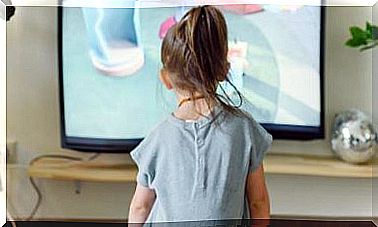“Meditation Has Been Shown To Be Effective In Many Psychological Problems”
Alba Valle, clinical psychologist expert in third-generation therapies and mindfulness instructor, recommends meditation as a psychological tool to keep the effects at bay. from pandemic fatigue, anxiety or stress.

During this last year, many people have suffered pandemic fatigue (stress, anxiety, sadness, discouragement and lack of energy) due to the uncertainty and frustration caused by the Covid-19 crisis. In this context, many people have discovered in meditation a tool to combat these symptoms.
Alba Valle, an expert clinical psychologist in third generation therapies and mindfulness instructor, combines the new currents of psychology with Buddhist teachings of meditation and her experience as a psychologist. With this approach, it allows the person who meditates to learn to live with greater self-knowledge and the ability to manage emotions, thus achieving a fuller life.
–The pandemic has helped many people to discover meditation and guided meditations. Why do you think this phenomenon has occurred?
-Because we were already in a meditation revolution that was in fashion, just as running became fashionable a few years ago, there was a lot of talk about the health benefits of meditation and the needs we have in our lives. unbridled lifestyles.
This joined the quarantine pandemic situation, in which we are stressed, we have no escape, stress, worry and anxiety arise … and specifically meditation is a tool that helps us a lot to reduce this type of associated symptoms to the pandemic.
Let’s say that this tool or antidote has had its peak of being known, used and talked about, that is why throughout this year there has been so much talk about meditation.
– How can meditation help in these moments of uncertainty?
–Meditation helps us in the process of taking control of our life and training the ability to focus on what is under our control. And this is a good way to handle our negative thoughts and feelings. When we meditate we can allow ourselves to let go of certain issues, stop struggling, and gain perspective, and with that we feel more secure.
Leading a more conscious life is something that cannot be achieved overnight. You need certain knowledge and above all practice, but by gradually introducing some simple habits into everyday life, such as meditation and pause, it is possible to achieve remarkable progress. This ends up being reflected in a better self-esteem and self-confidence, because if I know myself better, I know where my limits are and I know how to overcome them.
– Is it necessary now more than ever that we look at each other with compassion?
– Of course, because compassion understood from a Buddhist term is the desire to free oneself from suffering and the attitude of doing something for it.
We are in a situation in which we are easily having aversive situations: either we are feeling bad emotionally, or we live in delicate situations economically, or at the health level, or in the family or social sphere. In that sense, there is more emotional pain and suffering in general. That is why it is more important that we have a more liberating look at ourselves and an attitude that relieves us and helps us understand ourselves, treat ourselves well and overcome these moments in the best possible way.
In turn, compassion is also useful in relation to the people around us. I mean the term compassion from the Buddhist perspective, which has nothing to do with grief, or with pity or with enduring, but with the motivation to help, when we have compassion for others, when we understand and try to help people who They are side by side, we feel like we are all in the same boat and we don’t have to be fighting each other.
In a pandemic situation, having compassion also on a more social level will help us to cope much better, to not be arguing with the people we run into, to be less tense. As the quarantine anthem used to say, ‘we either get out of this together or we don’t get out’, and for this compassion is an essential ingredient.
–You are a clinical psychologist, is meditation an option in certain disorders? In what cases?
–Meditation is a tool that has a lot to do with an attitude to life, with a lifestyle and with many psychological skills that are developed such as the ability to let go of thoughts, let things flow, emotional acceptance, patience and compassion. These are all great antidotes to psychological problems and also psychological qualities that develop in most effective psychological therapies because they are things that help people feel better and overcome problems.
However, meditating is not therapy and a person cannot ‘self-do’ therapy by meditating. It is a tool that we can use if we are ill and have psychological disorders, but it must be in the hands of a professional, someone who knows how to explain how it works, how we can use it, what we can expect from it, what things we are going to feel in the way and what to do with them. Then it will be useful, but otherwise we are going to get lost and we are not going to get results or we will understand what we are doing and it can be even worse.
Meditation has been shown to be effective in many anxiety-related problems, such as hypochondria, obsessive compulsive disorder, generalized anxiety disorder and in chronic stress problems and chronic pain, in somatization problems, in the depression, dependencies and addictions. In general, in all common problems that are more neurotic and if in any case it is not indicated, it would be rather in problems that are not neurotic but of a psychotic type such as schizophrenia, because we can make someone enter too much in their mind and not have the This effect should be a well-used tool in a way that helps us better manage our mind.
In general, mindfulness and meditation techniques are used in many approaches to psychology in all major psychological problems and also in the most common daily problems.

– There are those who continue to see meditation as something esoteric … what would you say to them?
-I would tell you that if you are really interested in being able to experience in your life the benefits that you have read that have to do with meditation, if you really want to be able to know a little about how your mind works and have a greater management capacity, find that serenity within themselves, learning to be able to make a little space in the mind by letting go of thoughts and loosening the daily tensions and having those tools within, if there really is motivation and there is desire and there is restlessness, and the obstacle is that they see it as something weird or esoteric, I would tell you to read some mindfulness and neuroscience book because there is a lot of scientific evidence and it has nothing to do with something esoteric.
There are also many documentaries in which the effect of meditation on the brain is explained from neuroscience. It is simply a matter of looking for the information where science talks about meditation.
In fact, today there are many Tibetan and Oriental monks, lamas and teachers who are in Harvard and Oxford laboratories doing MRIs.
Because again and again science is impressed with the effects of meditation and is analyzing why these changes occur, at what levels they reach, how the brain changes, how it affects our emotional functioning, the tolerance we have in stressful situations and anxiety, how our hormonal system changes, our rhythms … If someone is interested, they can search and find answers.
– Are people who cannot stop still for a minute candidates to meditate? Is meditation always for everyone?
–People who cannot stand still for a minute are candidates for meditation. Meditation is always for everyone because it brings us to a state of mind that is natural to all human beings. It’s like saying, could all cars be on the brakes at some point? Can all cars stop? Of course, all cars can stop, and if any of them cannot, it is because they have a brake problem.
All people have the capacity, and in fact we have the need, to be at different times of our lives more balanced, in a state of greater rest because that is what allows our system to continue to function with health over time and that we are well.
When I speak of health I mean both physical and mental. If we never stop, we will be forcing other pieces and we will begin to have damage. It is as if we never brake the car and we are overheating the engine or other parts, and we will start to have breakdowns.
Meditation is therefore perfectly suitable for anyone, the thing is that not everyone has to go straight to meditating. Because there are people who balance their life, their body and their mind in other ways. For example, a person who lives in the country or has contact with nature and goes for a walk every day, those moments of walking help him to be more in harmony in some way. We just need those moments of being able to stop and slow down the revolutions.
If we cannot stand still for a minute, it would be good to see what is happening to us. Sometimes we do not stop for a minute because it seems that we are running away from something, many times from ourselves, and we do not want to be alone in silence because we do not want to connect with what we are feeling or needing, but precisely in those cases we also need it.
We can begin little by little, in moments of silence, of pause, to slow down a bit, and it does not have to be meditating. Then you can progressively start doing small five-minute meditations.
– There are those who have tried and have not succeeded. Is it difficult to meditate?
– Those who have tried and failed surely had unrealistic expectations. They have tried to blank their minds and they were hoping that during meditation no thoughts would come and that they would be absolutely concentrating on the breath, with the mind on nothing, and that is impossible. In such cases it is very easy to feel that meditation is not for me or that I have not succeeded.
Actually meditating is not difficult because it consists of becoming aware of what is happening in the present moment when it arises. When we realize that we have deconcentrated, we return to observe our present moment and what arises. It is about observing how different thoughts, sounds and sensations arise in our body.
What we are working on is detachment, simply allowing that to flow, without having to do anything with it.
It’s actually like being able to give ourselves a vacation where whatever is happening to me, I just let it flow.
Therefore it is not difficult but if we do not have a guide and nobody teaches us to do it, it is very complicated for us, we have unrealistic expectations and we easily put the label that we do it wrong and we do not achieve it.
– What are micromeditations and who can practice them?
–Micromeditations consist of making small stops in the day to day and regulating our breathing and our sensations without judging them. There are different types of micromeditation exercises, and they are all effective psychological tools. We can dedicate only a few minutes to the practice of micromeditations to help control aspects that reduce our quality of life such as stress, mental dispersion, fears, lack of motivation and worries of any kind.
In addition, the micromeditations serve as a bridge to reach the longer meditations that need more dedication, so that when you get to them, you already have a good practice behind your back. The most effective way not to be influenced by the feeling that you think you have to have when you are meditating is to do it the more times the better, and not the longer.
Like meditation, anyone can practice micromeditation even more easily than meditation at first.
– Can you give us an example of micromeditation?
–One way to do it is to carry out a brief ‘body scan’ by taking three breaths and observing the sensations that are present in the feet, ankles, calves, knees … and for a moment neglect the noise of the mind to make this trip through the senses and connecting with the body. This can be done in three minutes.
Another may be to simply take three breaths and pay attention to the surrounding sounds that we perceive. And yet another would consist of breathing and saying a mantra internally and letting yourself be ‘soaked’ by its meaning. For example: ‘everything is fine’ or ‘I’m here with me’.
These micro-meditations last approximately one to three minutes and I recommend doing them several times a day, for example when you get out of bed, before starting work and at the end, at the end of the day … Afterwards, they can be reconciled with other 10 to 20 minutes, and progressively lengthen the times as we feel comfortable.









